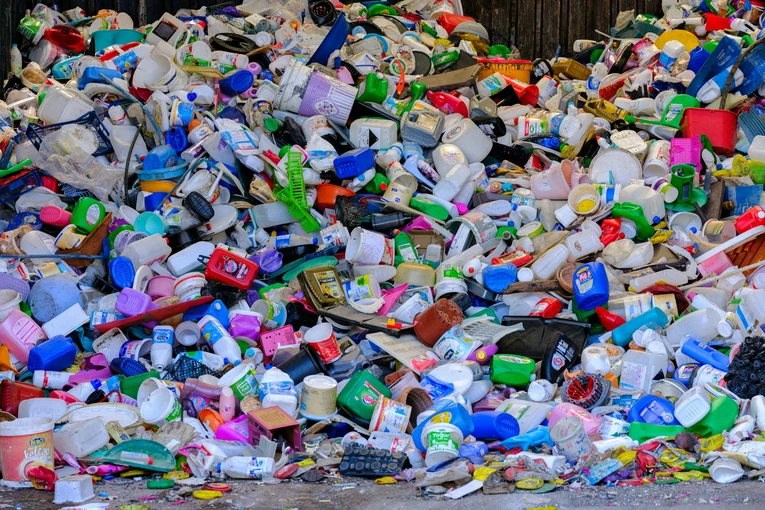Plastic is everywhere. It is easily seen in our homes, workplaces, and even nature. We can’t ignore the fact that plastics are useful to us. But its mindless consumption harms the environment. We must switch to eco-friendly alternatives to plastics.
Every year 350 million metric tons of plastic waste are generated by humans. About 8 million tons of plastic enter the ocean every single year. Depending on their disposal, most plastics take up to 500 years to decompose. Globally, about 90% of the plastic waste never gets recycled. It often ends up in landfills and oceans, where it harms millions of marine animals each year.
Because of this negative impact of plastics on the environment. Finding eco-friendly alternatives to plastic is important. Choosing a substitute for plastic helps reduce pollution, conserve natural resources, and protect our health. For example, less plastic waste means less trash in landfills and oceans, keeping our natural resources clean. By opting for plastic alternatives, we can make our environment safe for every living being.
Categories of Plastic Use and Their Alternatives
1. Single-Use Plastic
Single-use plastics are designed to be used only once. Includes plastic straws, cutlery, bags, and water bottles. Single-use plastics are one of the biggest contributors to the plastic pollution. Fortunately, there are many eco-friendly substitutes for plastic for items like:
Cutlery – Instead of using cutlery made of plastics shift yourself towards cutlery made of bamboo or metal. These alternatives are easily available in the market and are good to use. These plastic alternatives are durable, reusable, and ideal for the long run. It seems like using these items saves your money and the environment.
Bags – Replace the plastic bags with cloth, jute, or paper bags. One of the effective ways to reduce waste. Cloth and jute bags are more durable, easily hold heavy items, and can be used multiple times. These alternatives are biodegradable and do not harm the environment directly.
Water Bottles – Avoid using plastic bottles and buying packaged water. Instead, use bottles made of stainless steel or glass.
2. Plastic Packaging
Food Storage – Use beeswax wrap to cover bowls, wrap foods and keep fruits and vegetables fresh. Beeswax is reusable and biodegradable, made from cotton beeswax and tree resin. To store food items in the kitchen stop using plastic containers instead use glass containers with airtight lids. Unlike plastic containers glass does not stain or retain odors.
Shipping Materials – When we buy things online or send them via courier, we often use a lot of plastic packaging materials, such as bubble wrap and plastic mailers. To reduce this waste use packaging made from paper, cornstarch, or plant-based materials. You can easily replace plastic bubble wrap with paper or cardboard for cushioning items.
3. Household Items
Toothbrushes – Bamboo toothbrushes are a great substitute for plastic ones. These are as effective as plastic ones but are much better for the environment.
Sponges – The kitchen sponges we often use are made from plastic. Instead use natural sponges made from plant-based materials like cellulose. These plastic substitutes are eco-friendly and biodegradable.
4. Personal Care Products
Shampoo and Soap Bars – Replace liquid products that come in plastic bottles with shampoo and soap bars. Bars have minimal packaging or plastic-free packaging.
Refillable Containers – Many products now come with refillable containers. These containers can help reduce the need for single-use plastic for packaging. By going through this practice you can reduce the plastic waste generated by personal care products.
Glass and Metal Packaging – Products that come in glass or metal packaging are more sustainable. Plastic substitutes can be recycled easily without releasing harmful chemicals, unlike plastic packaging.
5. Trash Bags and Bin Liners
You can use compostable trash bags, which are made from plant-based materials. They break down faster than traditional plastic bags after use. Making it a perfect substitute for collecting waste.
6. Party Supplies and Decorations
We often throw parties on our birthdays, anniversaries, marriages, or house parties. For decorations use items made of paper or ecofriendly products. These can be decomposed easily after their work is done.
7. Pet Products
Many pet products such as toys, bowls, and waste bags are made of plastic. Instead use toys made of natural fibers like hemp, cotton, or wool. They are easy to decompose and safer for the pets to chew them. To serve foods for pets use bowls made of stainless steel or ceramic bowls.
8. Office and School Supplies
We often use stationaries made of plastics, which is harmful to the environment. Instead, you can use refillable pens. Use staple-free staplers to bind paper together, reducing the use of metal staples.
Verdict – Eco-Friendly Alternatives of Plastic
Switching to eco-friendly alternatives to plastic is an important step toward protecting our environment and reducing plastic pollution. With so many sustainable options available, like reusable bags, compostable packaging, and natural fiber products, we can easily make more conscious choices in our daily lives. By choosing these eco-friendly alternatives, we help conserve natural resources, protect wildlife, and promote a healthier, cleaner world for everyone.
Reference:

Pingback: Effective Ways to Reduce Carbon Footprint at Home - greenizc
Pingback: Is Styrofoam Recyclable or Trash? -
Pingback: Why Eco-Friendly Packaging is Important? Complete Guide -